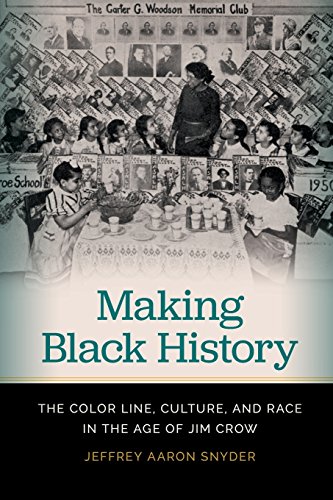

Most ebook files are in PDF format, so you can easily read them using various software such as Foxit Reader or directly on the Google Chrome browser.
Some ebook files are released by publishers in other formats such as .awz, .mobi, .epub, .fb2, etc. You may need to install specific software to read these formats on mobile/PC, such as Calibre.
Please read the tutorial at this link: https://ebookbell.com/faq
We offer FREE conversion to the popular formats you request; however, this may take some time. Therefore, right after payment, please email us, and we will try to provide the service as quickly as possible.
For some exceptional file formats or broken links (if any), please refrain from opening any disputes. Instead, email us first, and we will try to assist within a maximum of 6 hours.
EbookBell Team

4.0
46 reviewsIn the Jim Crow era, along with black churches, schools, and newspapers, African Americans also had their own history. Making Black History focuses on the engine behind the early black history movement, Carter G. Woodson and his Association for the Study of Negro Life and History (ASNLH). Author Jeffrey Aaron Snyder shows how the study and celebration of black history became an increasingly important part of African American life over the course of the early to mid-twentieth century. It was the glue that held African Americans together as “a people,” a weapon to fight racism, and a roadmap to a brighter future.
Making Black History takes an expansive view of the historical enterprise, covering not just the production of black history but also its circulation, reception, and performance. Woodson, the only professional historian whose parents had been born into slavery, attracted a strong network of devoted members to the ASNLH, including professional and lay historians, teachers, students, “race” leaders, journalists, and artists. They all grappled with a set of interrelated questions: Who and what is “Negro”? What is the relationship of black history to American history? And what are the purposes of history? Tracking the different answers to these questions, Snyder recovers a rich public discourse about black history that took shape in journals, monographs, and textbooks and sprang to life in the pages of the black press, the classrooms of black schools, and annual celebrations of Negro History Week. By lining up the Negro history movement’s trajectory with the wider arc of African American history, Snyder changes our understanding of such signal aspects of twentieth-century black life as segregated schools, the Harlem Renaissance, and the emerging modern civil rights movement.